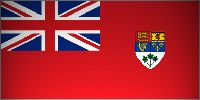The cat's among the pigeons, now...
Babble on.
I await the rending of clothes, the beating of breasts, the wailing and gnashing of teeth. Because the Canadian Medical Association's straight-out-of-the-box shiny brand new President not only owns a private orthopedic clinic, he actually has the temerity to believe Canadians should be able to pay for health care if they so choose.
Day said he has never supported the privatization of health care in Canada, and accused his detractors of deliberately distorting his position.
"Like most Canadians, and most physicians, I believe there is a place for the private sector and for public-private partnerships," he said.
Day believes the CMA has an important role in defining how the public and private sectors can work together to provide the best possible health care for Canadians.
Currently, my mother has more choice in how she handles her cat's health issues than she does over how she handles her own. For a CMA President to recognize the ludicrousness of this situation should not be cause for alarm.
But it will be. The calls to defend the integrity of Medicare will come faster than you can sign your name on a family practice waiting list.
Never mind that the CMA's mission statement eschews ideology in favour of results:
CMA Mission Statement
To serve and unite the physicians of Canada and be the national advocate, in partnership with the people of Canada, for the highest standards of health and health care.
In fact, never mind that the CMA President doesn't set policy for the group, and that even if he did, the physicians' association doesn't set policy for our various levels of government. Never mind that parallel public and private systems operate successfully around the world. Never mind that Canadians already access those systems in significant numbers. The health care Chicken Littles won't have any of it.
Having said that, the election of Dr. Day is not entirely insignificant, considering the discussion paper on this week's agenda:
Delegates at the CMA Annual Meeting Aug. 21–23 will be asked to use the paper to reconsider the private–public split. The CMA has traditionally supported a public system.
More privatization, however, may be problematic, the paper states, noting that reform of the system may be all but impossible without a significant increase in the number of physicians.
Drawing on international data and feedback from some 2800 Canadian doctors, the paper sketches 4 possible scenarios for the evolution of the Canadian system:
- Status quo
- Medicare plus: Including an evaluation of the basket of insured services, more cost-sharing arrangements (e.g., premiums), allowing physicians to opt out, and allowing Canadians to buy private insurance for some services and to get paid care elsewhere if wait times are exceeded (safety valve)
- Medicare complemented: Including a safety valve for more procedures, an expanded range of privately funded services (and private insurance for the same), and allowing physicians to deliver medically necessary services under both publicly and privately funded systems
- Medicare plus parallel private: Public services for all, but Canadians will have the option of private insurance for a full range of hospital and medical services.
None of the scenarios completely meet all the paper's 10 recommended guiding principles for the future of health care, CMA President Ruth Collins-Nakai said during the paper's release.
“At some point Canadians have to decide whether or not they want to continue with a tax-supported collective health care system or whether they wish to go with a more private, individual-rights type of system and ignore the collective. That's what it comes down to. Or whether they want something that is somewhere between those 2 extremes.”
One wonders if what the CMA sees as the biggest roadblock to reform is actually a chicken and egg scenario:
The paper indicates that it may well be impossible for Canada to adopt any alternative to the status quo without significantly increasing the number of physicians and hospital beds. It states that “All 12 countries with parallel private systems have a higher ratio of practising physicians to population than Canada.” Canada had the lowest ratio of physicians to 100 000 population at 2.1; the highest is 4.4 in Greece.
Does a more flexible system attract or help retain qualified physicians, or are they a prerequisite for a more flexible system in the first place.
I don't know the answer to that question. But if the CMA is discussing this, and the membership has elected a president with a vision that departs from the status quo, one wonders if we're seeing the first signs of a sea change in Canadian health care. At least the CMA isn't backing down from this discussion. Good on them for realizing our health system is a means to an end, and not an end in and of itself.
If only the defenders of the status quo would have the same revelation.
Babble off.
Update: Egad. I'm disappointed, but can't say I'm surprised. Tip of the toque, as Andrew would say, to his own Bound By Gravity, where he weighs in himself.







2 Comments:
What disappoints me Tim, isn't your opposition to privatization. We can, and probably will differ on that, and I don't have a problem with differences of opinion, as you know.
My disappointment centres around a) your insistence that public is white and private is black without looking at any of the shades in between, and b) the apocalyptic language you use to describe the situation.
Good point, Chris. But that doesn't make it any less ridiculous.
Post a Comment
<< Home